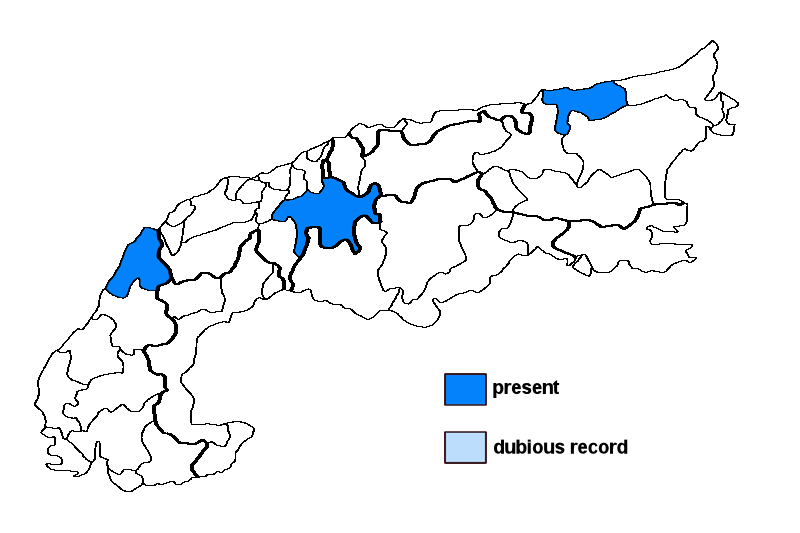Cresporhaphis muelleri (Duby) M.B. Aguirre
Syn.: Leptorhaphis aggregatus Eitner, Sphaeria muelleri Duby
Non- or doubtfully lichenised.
Substrate: bark
Altitudinal range: from the submediterranean/colline belt (potential vegetation: mixed deciduous forests dominated by Quercus and Carpinus) to the montane belt (potential vegetation: deciduous forests dominated by Fagus sylvatica and closed coniferous forests with Picea abies)
Note: doubtfully lichenised with coccaceous green algae, thalline patches greyish-whitish, shiny, immersed in the bark, ascomata perithecioid, black, smooth, semi-immersed (to 0.4 mm in diam.), with a beaked central ostiolum, often confluent, ascomatal wall with two layers, the outer layer pseudostromatic, the inner layer of thin-walled, mostly elongated cells with brown walls, forming a textura angularis, hamathecium of thin-walled interascal filaments with some septations and branchings, embedded in a gelatinous matrix, and short periphyses lining the ostiolar region, with virtually unitunicate 8-spored clavate to subcylindrical asci (to 85 µm long), ascospores simple and somewhat falcate (25-30 × 2-3.5 µm); on bark of deciduous trees (e.g. Acer pseudoplatanus); rare throughout Europe, including a few scattered localities in the Alps, only known from historical collections.
Austria: Oberösterreich; Switzerland: Graubünden; France: Haute-Savoie;





